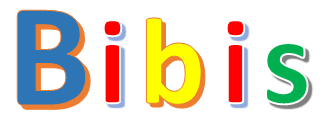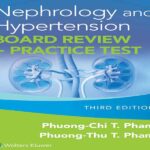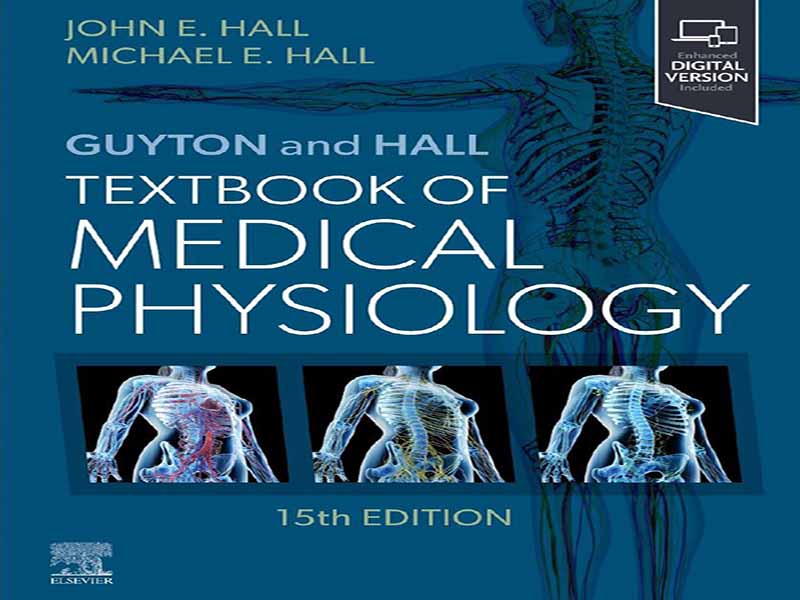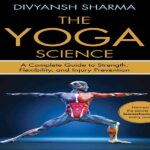- عنوان کتاب: Guyton and Hall Textbook of Medical Physiology , 15 Edition
- نویسنده: John E. Hall, Michael E. Hall
- حوزه: فیزیولوژی
- سال انتشار: 2026
- تعداد صفحه: 1070
- زبان اصلی: انگلیسی
- نوع فایل: pdf
- حجم فایل: 56.6 مگابایت
هدف اصلی ما در ویرایش پانزدهم کتاب درسی فیزیولوژی پزشکی، توضیح چگونگی همکاری سلولها، بافتها و اندامهای مختلف بدن انسان برای حفظ حیات با زبانی قابل فهم برای دانشجویان است. کتاب درسی فیزیولوژی پزشکی یک کتاب مرجع یا خلاصهای از جدیدترین پیشرفتهای فیزیولوژی نیست. این کتابی است که سنت نگارش آن را عمدتاً برای دانشجویانی که مایل به یادگیری اصول اولیه فیزیولوژی مورد نیاز برای شروع حرفه در حرفههای مراقبتهای بهداشتی مانند پزشکی، دندانپزشکی، پرستاری یا تحصیلات تکمیلی در علوم زیستی و بهداشتی هستند، ادامه میدهد. با این حال، این کتاب باید برای پزشکان و متخصصان مراقبتهای بهداشتی که مایل به بررسی مکانیسمهای اساسی بیماریهای انسان هستند نیز مفید باشد. برخلاف اکثر کتابهای درسی پزشکی اصلی که اغلب 20 نویسنده یا بیشتر دارند، هشت ویرایش اول کتاب درسی فیزیولوژی پزشکی کاملاً توسط دکتر آرتور گایتون نوشته شده است، که استعدادی در انتقال ایدههای پیچیده به شیوهای روشن و جالب داشت که مطالعه فیزیولوژی را لذتبخش میکرد. ما تلاش کردهایم تا این سبک ارائه را در ویرایشهای بعدی حفظ کنیم و بر محتوایی که بیشتر مربوط به دانشجویان بالینی و پیشبالینی است تمرکز کنیم. اگرچه این کتاب با پیشرفت علم فیزیولوژی به طور گسترده بهروزرسانی شده است، اما ما همان سازماندهی یکپارچه را حفظ کردهایم تا اطمینان حاصل کنیم که برای دانشجویانی که مطالعات فیزیولوژی خود را آغاز میکنند مفید است و به اندازه کافی جامع است که دانشجویان بتوانند در طول دوران حرفهای خود از آن استفاده کنند. وظیفه ما لذتبخش و چالشبرانگیز بوده است، زیرا پیشرفتهایی در درک اسرار عملکردهای بدن با هر ویرایش جدید همچنان پدیدار میشود. فناوریهای جدید و تحقیقات گسترده، توضیح مبانی مولکولی و فیزیکی بسیاری از اصول فیزیولوژی را ممکن ساخته است، نه صرفاً خلاصه کردن مجموعهای از پدیدههای بیولوژیکی جداگانه و غیرقابل توضیح. با این حال، رویدادهای مولکولی که زیربنای عملکردهای مولکولی سلولهای بدن هستند، تنها توضیحی جزئی از فیزیولوژی انسان ارائه میدهند. عملکرد کلی بدن انسان نیاز به سیستمهای کنترل پیچیدهای دارد تا با یکدیگر ارتباط برقرار کنند و عملکردهای مولکولی سلولها، بافتها و اندامهای بدن را در سلامت و بیماری هماهنگ کنند. ما امیدواریم که کتاب درسی فیزیولوژی پزشکی، عظمت بدن انسان و عملکردهای فراوان آن را منتقل کند و دانشجویان را به مطالعه فیزیولوژی در طول دوران حرفهای خود ترغیب کند. فیزیولوژی، علوم پایه را با پزشکی بالینی پیوند میدهد. زیبایی بزرگ فیزیولوژی این است که عملکردهای فردی تمام سلولها، بافتها و اندامهای مختلف بدن را در یک کل عملکردی، یعنی بدن انسان، ادغام میکند. در واقع، بدن انسان چیزی فراتر از مجموع اجزای آن است و زندگی به این عملکرد کلی متکی است، نه فقط به عملکرد اجزای بدن به صورت جداگانه از یکدیگر. خوشبختانه، بدن ما دارای شبکه وسیعی از کنترلهای بازخوردی است که برای عملکرد طبیعی و بقا ضروری هستند. فیزیولوژیستها این سطح بالای کنترل داخلی بدن را هموستاز مینامند. این کنترلهای بازخوردی در تمام سطوح سازماندهی بدن رخ میدهند – از سطوح مولکولی و ژنتیکی گرفته تا سلولها، بافتها، اندامها و کل بدن. در بیماریها، این کنترلها اغلب به طور جدی مختل میشوند، اگرچه جبرانهای هموستاتیک به کار خود ادامه میدهند و عملکردهای حیاتی را حفظ میکنند تا زمانی که به حد معینی برسند و کل بدن دیگر نتواند زنده بماند. یکی از اهداف این متن تأکید بر اثربخشی و زیبایی مکانیسمهای هموستاتیک بدن است، اما ما همچنین برخی از عملکردهای غیرطبیعی آنها را در بیماریهای مختلف ارائه میدهیم. اگرچه ما اغلب در متن در مورد مقادیر «عادی» بحث میکنیم، اما با این درک که بسیاری از سیستمهای کنترل بدن دائماً در حال واکنش به اختلالات هستند و این تغییرپذیری معمولاً در هر فرد بسته به زمان روز، فعالیت و سایر عوامل وجود دارد، مطرح میشود. تغییرپذیری فیزیولوژیکی نیز در بین افراد مختلف، بسته به عواملی مانند وزن بدن، رژیم غذایی، سن، جنس، محیط و ژنتیک، رخ میدهد. در اکثر کتابهای درسی، بحث فیزیولوژی انسان اغلب بر روی یک مرد جوان «متوسط» ۷۰ کیلوگرمی متمرکز است، اگرچه یک مرد متوسط دیگر ۷۰ کیلوگرم وزن ندارد و واضح است که تفاوتهای جنسی مهمی در بسیاری از عملکردهای فیزیولوژیکی وجود دارد. در این ویرایش، علاوه بر تفاوتهای آشکار مربوط به تولید مثل و صفات فیزیکی، برخی از این تفاوتهای مهم در فیزیولوژی زن و مرد را مورد بحث قرار میدهیم. علیرغم تلاشهای ما برای طرح کلی تفاوتهای جنسی مهم در عملکردهای فیزیولوژیکی، اغلب باید تعمیمهایی انجام دهیم، تا حدی به دلیل دادههای محدود موجود و همچنین برای جلوگیری از ایجاد یک خلاصه بیش از حد طولانی. اگرچه فصلها مورد بازنگری و بهروزرسانی قرار گرفتهاند تا اصول جدید فیزیولوژی و شکلهای جدیدی برای نمایش بهتر این اصول را در بر بگیرند، اما طول متن به دقت کنترل شده است تا حجم کتاب محدود شود و بتوان از آن به طور مؤثر در دورههای فیزیولوژی برای دانشجویان استفاده کرد.
Our main goal in the 15th edition of the Textbook of Medical Physiology is to explain, in language easily understood by students, how the different cells, tissues, and organs of the human body work together to maintain life. The Textbook of Medical Physiology is not a reference book or a compendium of the most recent advances in physiology. It is a book that continues the tradition of being written mainly for students who wish to learn the basic principles of physiology needed to begin a career in health care professions, such as medicine, dentistry, nursing, or graduate studies in the biological and health sciences. However, it should also be useful to clinicians and health care professionals who wish to review the fundamental mechanisms of human diseases. Unlike most major medical textbooks that often have 20 or more authors, the first eight editions of the Textbook of Medical Physiology were written entirely by Dr. Arthur Guyton, who had a gift for communicating complex ideas in a clear and interesting manner that made studying physiology enjoyable. We have strived to maintain this presentation style in subsequent editions, with a focus on content most relevant to clinical and preclinical students. Although the book has been extensively updated as the science of physiology has advanced, we have maintained the same unified organization to ensure that it useful for students who are beginning their studies of physiology and that it is comprehensive enough for students to continue to use during their professional careers. Our task has been enjoyable and challenging as advances in understanding the mysteries of body functions continue to emerge with each new edition. New technologies and extensive research have made it possible to explain the molecular and physical bases for many physiology principles, rather than merely summarizing a series of separate and unexplained biological phenomena. However, the molecular events that underpin the molecular functions of the body’s cells provide only a partial explanation of human physiology. The total function of the human body requires complex control systems to communicate with each other and to coordinate the molecular functions of the body’s cells, tissues, and organs in health and disease. We hope that the Textbook of Medical Physiology conveys the majesty of the human body and its many functions and that it stimulates students to study physiology throughout their careers. Physiology links the basic sciences with clinical medicine. The great beauty of physiology is that it integrates the individual functions of all the body’s different cells, tissues, and organs into a functional whole, the human body. Indeed, the human body is much more than the sum of its parts, and life relies upon this total function, not just on the function of individual body parts in isolation from the others. Fortunately, our bodies are endowed with a vast network of feedback controls that are essential for normal function and for survival. Physiologists call this high level of internal bodily control homeostasis. These feedback controls occur at all levels of organization in the body— from the molecular and genetic levels to the cells, tissues, organs, and the whole body. In diseases, these controls are often seriously disturbed, although homeostatic compensations continue to operate and maintain vital functions until a limit is reached and the whole body can no longer live. One of the goals of this text is to emphasize the effectiveness and beauty of the body’s homeostatic mechanisms, but we also present some of their abnormal functions in various diseases. Although we often discuss “normal” values in the text, it is with the understanding that many of the body’s control systems are constantly reacting to perturbations, and that variability normally exists in each person, depending on the time of day, activity, and other factors. Physiological variability also occurs among different individuals, depending on factors such as body weight, diet, age, sex, environment, and genetics. In most textbooks, discussion of human physiology often focuses on the “average” 70-kg young man even though the average man no longer weighs 70 kg and it is clear that there are important sex differences in many physiological functions. In this edition, we discuss some of these important differences in male and female physiology, in addition to obvious differences related to reproduction and physical traits. Despite our attempts to outline important sex differences in physiological functions, we must often make generalizations, partly as a result of limited available data but also to avoid creating an excessively lengthy compendium. Although the chapters have been revised and updated to include new principles of physiology and new figures to better illustrate these principles, the text length has been closely monitored to limit the book’s size so that it can be used effectively in physiology courses for students and health care professionals. New references have been chosen for more extensive presentation of physiological principles, for the quality of their own references, and for their accessibility. The selected bibliography at the end of the chapters lists mainly review papers from recently published scientific journals that can often be freely accessed from the PubMed site at https://www.ncbi.nlm.nih.gov/pubmed/ . Use of these references, as well as cross-references from them, provides much more extensive coverage of the entire field of physiology than can be included in this book. Another feature of the book is that the print is set in two sizes. The material in large print constitutes fundamental physiological information that students will require in virtually all of their medical studies. The material in small print and highlighted with a pale blue background is of several different types: (1) anatomical, chemical, and other information that is needed for immediate discussion but that most students will learn in more detail in other courses; (2) information of special importance to certain fields of clinical medicine; and (3) information that will be of value to those students who wish to study specific physiological mechanisms more deeply. The electronic version of this book provides links to additional content, including video animations and selfassessment questions that can be accessed with computers, smartphones, and electronic tablets. For additional self-assessment beyond these textbook supplements, the reader may consider using a copy of Guyton and Hall Physiology Review, which includes more than 1000 practice questions, with explanations for the questions that are referenced to the parent Textbook of Medical Physiology. We have also prepared a Pocket Companion that is designed to provide a concise overview of key facts and concepts in the parent Textbook of Medical Physiology. Although these ancillary materials do not contain some of the important details that enrich the physiological concepts or the clinical examples of pathophysiology contained in the parent textbook, we anticipate that they will assist readers in understanding the basic principles of physiology. We sincerely thank the many persons who helped to prepare this book, including our colleagues at the University of Mississippi Medical Center, who provided valuable suggestions. We are especially grateful to Stephanie Lucas for excellent assistance and to James Perkins for excellent illustrations. We also thank Elyse O’Grady, Kathryn DeFrancesco, Angie Breckon, Jodi Willard, and the entire Elsevier team for continued editorial and production excellence. We are also grateful for the many readers who continue to help us improve the Textbook of Medical Physiology with their comments and suggestions. We hope that you enjoy the current edition and find it even more useful than previous editions.
این کتاب را میتوانید از لینک زیر بصورت رایگان دانلود کنید:
Download: Guyton and Hall Textbook of Medical Physiology , 15 Edition




































نظرات کاربران